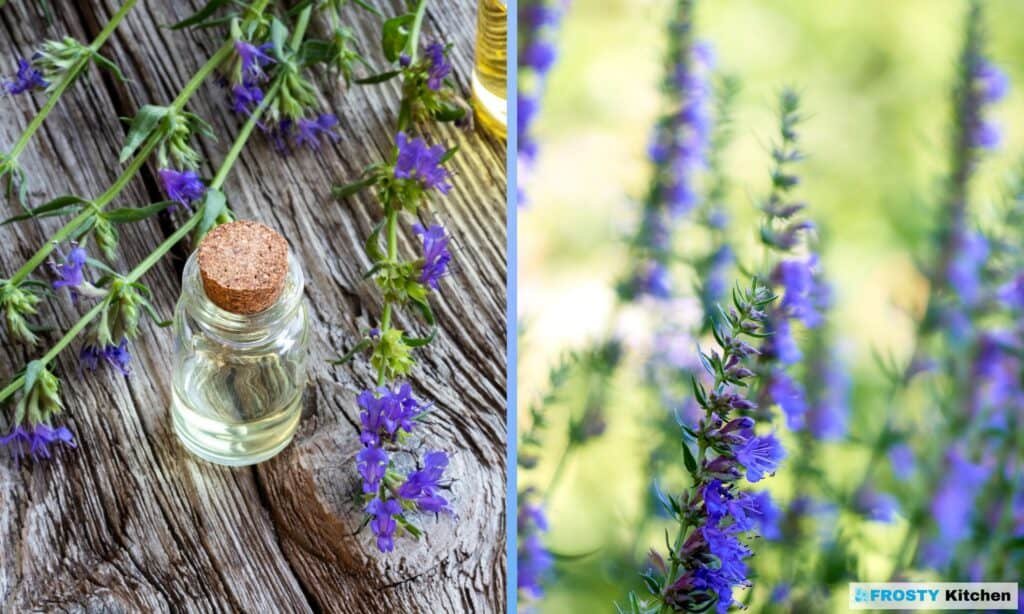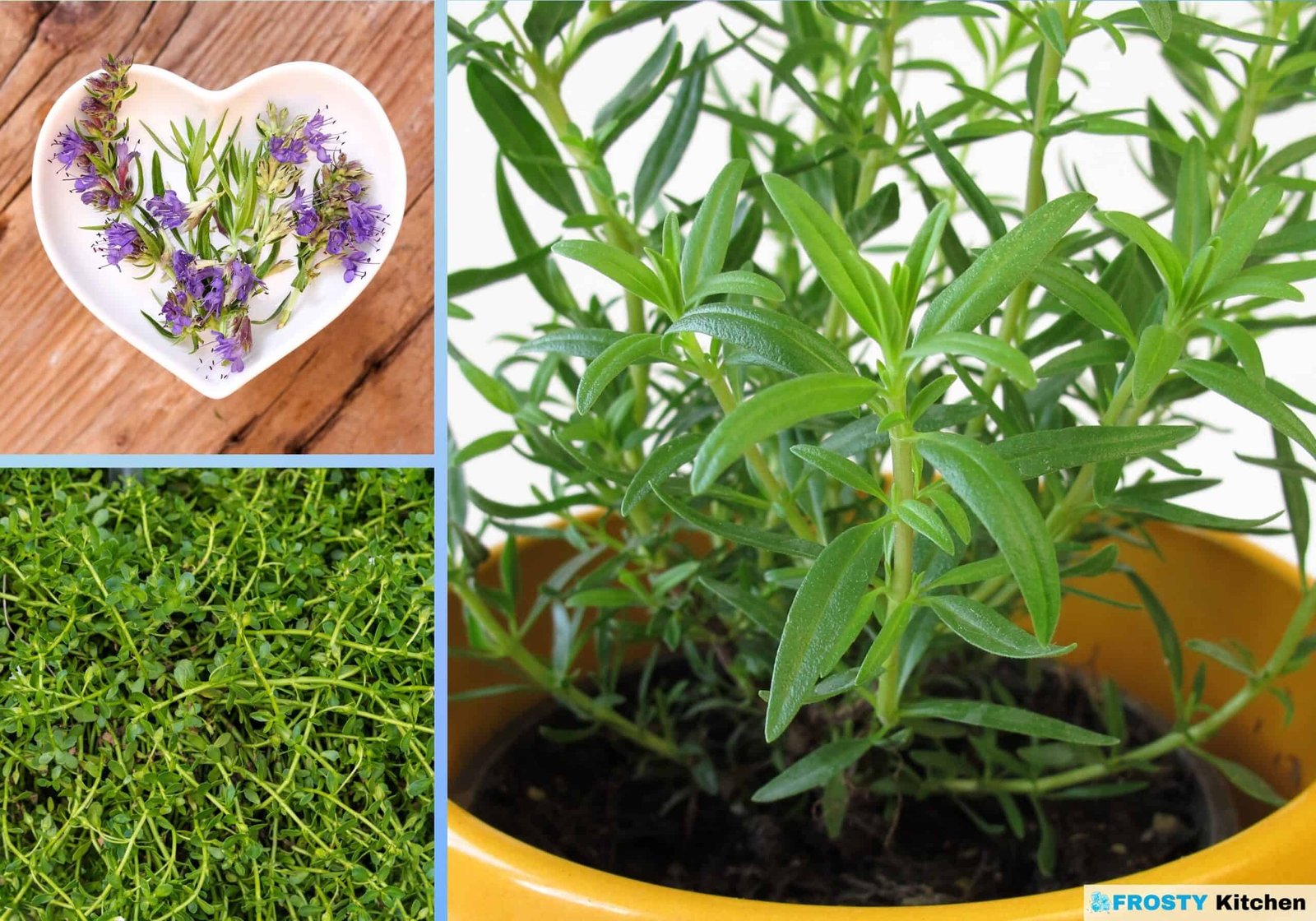Embarking on a journey to preserve the licorice notes of Anise Hyssop leaves may initially seem daunting. However, with freezing as a loyal ally, the path to preservation becomes less perilous. This guide is a treasure trove of knowledge, unveiling the steps to freeze Anise Hyssop’s leaves proficiently. Your adventure towards enjoying the aromatic essence of Anise Hyssop leaves whenever you desire is about to commence.
Anise Hyssop, with its sweet licorice aroma, has been a cherished herb in gardens and kitchens alike. Its journey from the wild prairies to modern-day herb gardens is a testimony to its enduring allure.
Unfolding through this guide, you will discover the rich history, nutritional merits, and benefits of freezing Anise Hyssop leaves, escorted by a step-by-step guide on how to do it proficiently. So, let’s embark on this aromatic voyage!
What is Anise Hyssop?
Anise Hyssop is a beloved herb, recognized for its licorice-scented aroma and a plethora of culinary and medicinal applications.
Origin and History
- Native to the prairies of North America, Anise Hyssop has been a valued herb for its aromatic and medicinal attributes for centuries.
- Its sweet licorice aroma has enhanced numerous dishes and also played a significant role in traditional medicine.
Nutritional Value
- Anise Hyssop is not merely a flavor enhancer but a bearer of nutrition as well. It harbors a modest amount of vitamins and minerals, which contribute to its health-benefiting properties.
- Moreover, its aromatic compounds have been known for their potential health benefits and unique fragrances.
Benefits of Freezing Anise Hyssop Leaves
Freezing Anise Hyssop leaves presents several advantages:
- Preservation of Aroma: Freezing helps in preserving the licorice aroma of Anise Hyssop.
- Extended Shelf Life: Freezing extends the shelf life, ensuring you have a steady supply of Anise Hyssop leaves whenever needed.
- Ease of Use: Frozen Anise Hyssop leaves can be used directly from the freezer in various recipes, offering convenience for culinary enthusiasts.

Preparing Anise Hyssop Leaves for Freezing
- Packaging: Utilize airtight, freezer-safe containers or vacuum-sealed bags to protect Anise Hyssop leaves from moisture and freezer burn.
- Portioning: Divide Anise Hyssop leaves into usable portions to facilitate easy use post-freezing.
Step-by-Step Guide to Freezing Anise Hyssop Leaves
Preserving the licorice essence of Anise Hyssop leaves through freezing is a simplistic yet effective method. The following methods elucidate the steps to freeze Anise Hyssop leaves, ensuring their quality remains pristine.
Method 1: Freezing Whole Anise Hyssop Leaves
- Preparation: Ensure Anise Hyssop leaves are clean and dry.
- Storage: Transfer Anise Hyssop leaves into airtight containers.
- Freezing: Place the containers in the freezer, ensuring they lay flat for uniform freezing.
Method 2: Freezing Chopped Anise Hyssop Leaves
- Preparation: Wash, dry, and chop the Anise Hyssop leaves as per your preference.
- Storage: Spread the chopped Anise Hyssop leaves on a baking sheet and freeze until solid, then transfer to airtight containers or bags.
- Freezing: Place the containers or bags in the freezer.
Refreezing Anise Hyssop Leaves
Refreezing Anise Hyssop’s leaves calls for a cautious approach. Anise Hyssop leaves can lose their aromatic essence and vibrant color if subjected to repeated freezing and thawing. The process of refreezing can lead to a less desirable texture and may also introduce harmful bacteria if not handled properly.
Refreezing can significantly deteriorate the quality of Anise Hyssop leaves. Therefore, it is advisable to portion the Anise Hyssop leaves adequately before the initial freezing, to avoid the need for refreezing.
Storage Duration and Factors Affecting it
- Duration: Frozen Anise Hyssop leaves can be stored for up to 10 to 12 months, depending on various factors. The freshness of Anise Hyssop leaves at the time of freezing plays a crucial role in determining its storage life.
- Storage Containers: Using airtight containers or vacuum-sealed bags is paramount to prevent freezer burn and maintain the quality of Anise Hyssop leaves. Glass containers with airtight lids or vacuum-sealed plastic bags are ideal choices for preserving the quality of frozen Anise Hyssop leaves.
- Factors: Factors such as the initial freshness of Anise Hyssop leaves, the method of freezing, and the consistency of the freezing temperature can significantly impact the storage duration.
Frequently Asked Questions
Q1: How can I use frozen Anise Hyssop leaves?
- Frozen Anise Hyssop leaves can be utilized directly from the freezer in various recipes without any need for thawing, imparting a sweet licorice aroma to your dishes.
Q2: Does Anise Hyssop lose its aroma over time?
- Yes, like other herbs, Anise Hyssop can lose its aroma over time, especially when exposed to air, light, or moisture. However, freezing can significantly slow down this process and preserve its aroma.
Q3: Can I chop Anise Hyssop leaves before freezing?
- Chopping Anise Hyssop leaves before freezing is a great idea if you plan to use them in recipes that call for chopped Anise Hyssop leaves. It also allows for quicker freezing and thawing.

